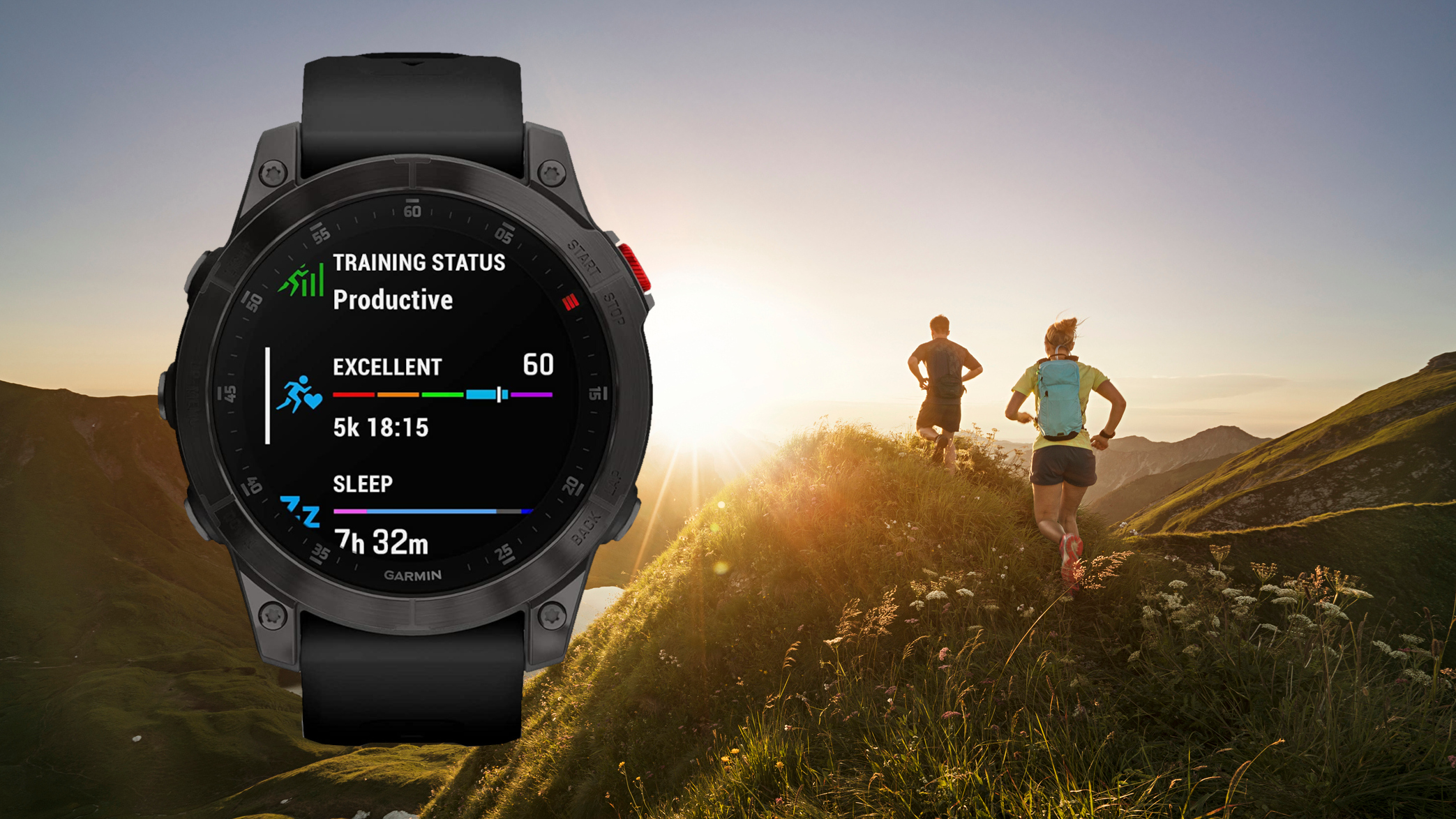The Garmin Epix is a great watch, but this patented tech could make it even better
Garmin has registered several patents for new solar charging tech that could transform future sports watches

The Garmin Epix is one of the best GPS watches around right now – but it could be even better, and Garmin is developing the technology to make that happen.
The Epix released earlier this year, at the same time as the Garmin Fenix 7, and the two are fundamentally very similar. Both are multisports GPS watches with a vast array of training tools to help you balance work and recovery, whatever your preferred activity.
The main difference between the two is the screen technology. While all watches in the Fenix 7 lineup use memory-in-pixel (MIP) technology, the Epix uses OLED, which means clearer colors, a higher refresh rate (handy for animations), and crisper graphics. The displays on Fenix 7 watches are certainly not shabby, but they aren't as vivid and have a blue backlight that renders colors a little muddy.
So why not add OLED tech to all Fenix and Forerunner watches? There are two main reasons – the first of which is cost. OLED units seem to be slightly more expensive than MIP, even taking into account economies of scale. The second reason is battery life. Even if you don't enable always-on mode (which really chews through battery life), OLED displays use considerably more power than MIP.
You can't add photovoltaic glass to give the battery a boost from regular sunlight exposure either, because unlike MIP screens, OLED doesn't look good enough with a layer of light-sensitive material over the top.
Thankfully though, Garmin's engineers seem to have come up with a solution, and it's one that might just make the next-generation Epix the best sports watch yet.
Here comes the sun
Before we go any further, it's worth noting that the Garmin Epix released earlier this year is technically the Epix 2. The first ever Garmin Epix was released in 2018, and although it was widely praised for features like its color touchscreen, it wasn't universally loved. The main problem was that it was just too big to be comfortable, so Garmin parked the idea until the technology caught up.
Advnture Newsletter
All the latest inspiration, tips and guides to help you plan your next Advnture!
This might mean that the next watch in the line is known as the Epix 3, or Garmin might choose to call it the Epix Mk2 to differentiate it.
Whatever its name, it's possible that this next-generation watch could be the one to break the mold and finally offer both OLED tech and super long battery life. Over recent months, Garmin has registered a series of patents that describe a method for creating an OLED display that would be capable of harvesting solar power.
Back in February this year, the first patent application emerged via the US Patent and Trademark Office, describing the current situation (sportspeople want to go days without charging their watches) and a potential solution.
An OLED display is made up of subpixels that emit red, green, and blue light, These subpixels are typically aligned in rows. Rather than putting a layer over the top of the display, which would spoil its look, the patent suggests placing tiny lines of photovoltaic material in between the subpixels so that the watch face can collect solar energy, without anything over the top.
It's not clear whether this would have any effect on the screen's look or behavior, but subsequent applications have described how Garmin's engineers could reduce any 'banding' that might appear as a result, and how the new display could also integrate touch controls.
Keeping costs down
It might not even be as expensive as we'd first expected. One more recent patent application describes various manufacturing techniques that could be used to keep the cost of building solar OLED watch screens down as much as possible.
Essentially, it comes down to preventing metal oxidizing. Photovoltaic cells are joined together by tiny metal electrodes. The thicker these electrodes are, the more efficiently they conduct electricity as resistance is lower, and less energy is lost as heat. However, the process of making them thicker involves laying down multiple layers of metal on top of one another, and if a layer of oxidized metal forms between the layers, this reduces efficiency.
There are various ways around this, such as spraying on an extremely fine layer of gold to prevent oxidizing, but this would be costly in terms of both materials and manufacturing equipment. Instead, Garmin's engineers have proposed a way to use carefully controlled electrical sweeps to break down metal oxide as it forms.
Of course, patents are never a guarantee that a particular technology will make its way into a finished product, but this one seems particularly apt right now, and if Garmin can build a new Epix that lasts weeks between charges with heavy use, it'll have something really remarkable on its hands – and our wrists.
- Garmin Venu Sq 2: news, leaks, and what we want to see

Cat is Homes Editor at TechRadar and former editor of Advnture. She's been a journalist for 15 years, and cut her teeth on magazines before moving online. She helps readers choose the right tech for their home, get the best deals, and do more with their new devices.
